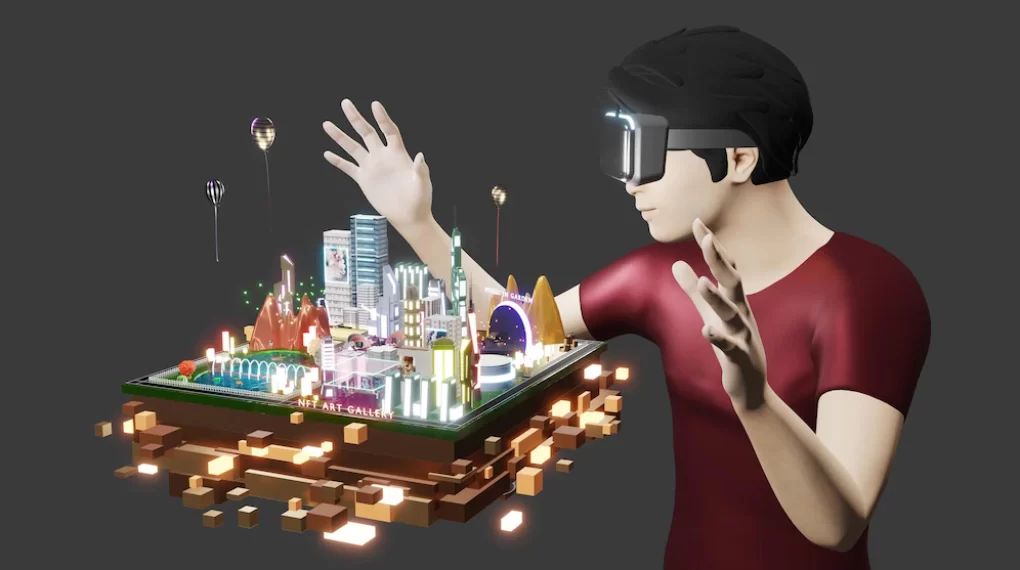
In the ever-evolving world of advertising, staying ahead of the curve and capturing the attention of consumers has become increasingly challenging. Traditional outdoor advertising methods, such as billboards and posters, are effective, but they often lack the ability to create a truly immersive and memorable experience. However, with the rapid advancements in technology, brands are now embracing the potential of 3D technology to revolutionize their outdoor ad campaigns.
Digital out-of-home (DOOH) marketing has witnessed significant growth in recent years, transforming the advertising landscape. This form of advertising has experienced substantial expansion due to its ability to deliver targeted, real-time content to a wide range of locations. The integration of data analytics, programmatic advertising, and dynamic content has made DOOH campaigns more effective and personalized, maximizing engagement and driving results. The explosive growth can be seen in the US which now has over 218,000 DOOH displays in 2023, growing from just 6700 in 2018.
Perks Of Leveraging 3D Technology In Outdoor Ads
3D technology has come a long way in recent years, and its applications have expanded beyond the realms of entertainment and gaming. From movies to virtual reality experiences, 3D has proven to be a powerful tool in captivating audiences and delivering engaging content. Now, brands are harnessing the potential of 3D technology to create visually stunning and interactive outdoor ad campaigns that leave a lasting impression on viewers.
-
Competent In Grabbing The Attention
One of the most significant advantages of using 3D technology in outdoor advertising is its ability to grab attention. In a sea of static billboards and posters, a well-executed 3D ad stands out and immediately captures the curiosity of passersby. The lifelike and dynamic nature of 3D imagery creates a sense of wonder and intrigue, compelling viewers to stop and take notice.
-
Offers Immersive Experience

Moreover, 3D technology allows for the creation of immersive and interactive experiences. Brands can now design outdoor ads that go beyond mere visuals and actively engage the audience. For example, using augmented reality (AR) technology, viewers can use their smartphones to interact with 3D objects or characters in real time, blurring the boundaries between the physical and digital worlds. This level of interactivity not only increases engagement but also enhances brand recall and message retention.
-
Creates A Bond With The Audience
Another benefit of implementing 3D technology in outdoor ad campaigns is the opportunity for storytelling. Brands can leverage the immersive nature of 3D to tell compelling narratives and create emotional connections with their audience. By transporting viewers into a different world or scenario, brands can elicit strong emotions and leave a lasting impact. This storytelling approach not only enhances brand perception but also fosters a deeper sense of brand loyalty among consumers.
-
Versatility
Furthermore, 3D technology offers a level of versatility that traditional outdoor advertising lacks. Brands can experiment with various creative concepts and adapt their campaigns to different locations and contexts. Whether it’s a giant 3D sculpture, a holographic display, or a projection mapping installation, the possibilities are endless. This versatility allows brands to customize their campaigns based on their target audience and the specific objectives of their advertising efforts.
However, it’s important to note that implementing 3D technology in outdoor ad campaigns requires careful planning and execution. Brands need to ensure that the technology seamlessly integrates with the surrounding environment and enhances rather than distracts from the overall experience. Additionally, consideration must be given to accessibility and inclusivity, as not all viewers may have access to the necessary devices or technologies to fully engage with the 3D content.
Case Studies Of Brands Implementing 3D Technology In Ad Campaigns
Brands, especially e-commerce brands, are seeking modern methods to enhance their customer interactions all across the globe. We all know how digital customer behavior and consumer values have been transforming dramatically over the past few years. Given below are some popular brands that have left no stone unturned in implementing 3d technology in their digital marketing campaigns.
-
IKEA
IKEA was possibly the first and the only accomplished brand that had interacted with AR as well as 3D users. The brand was among the initial brands that used augmented reality and 3D technologies in all its ad campaigns. When IKEA Place was released, people met an augmented reality software that helped them to place 3D models of furniture in their homes. Thus, they could check how the product would look before actually making a purchase.
-
Nike
Another global corporation that made use of 3D technology in their digital store. It started experimenting with 3D printing technology in 2013 with its chain of sneaker production. This test came out as a success over time and allowed Nike to manufacture more inventive products. Moreover, testing, iterating, and constructing geometries became possible for the Nike team. The brand has software that initially filters proper shoe sizes simply by scanning the foot of its users along with letting them choose the right color and design.
-
Fatboy
Fatboy, the Dutch-based design industry, is quite popular for manufacturing popular beanbags. When consumers were no longer happy with the 2d product images, the brand collaborated with CGTrader Arsenal. This collaboration resulted in broadening their digital library for the audience. Owing to this change, the firm enjoyed improved customer interaction, higher conversions, and lower rates of interest. Customers could now get a 3D view of their desired beanbags and inspect whether it was worth buying or not.
The Bottom Line
In conclusion, brands are recognizing the potential of 3D technology to transform their outdoor ad campaigns. By leveraging the captivating nature of 3D imagery, brands can create immersive, interactive, and memorable experiences that leave a lasting impression on viewers.
The ability to grab attention, tell compelling stories, and customize campaigns based on location and audience make 3D technology a powerful tool in the modern advertising landscape. As technology continues to evolve, it will be fascinating to see how brands push the boundaries of creativity and innovation to captivate audiences in new and exciting ways.






